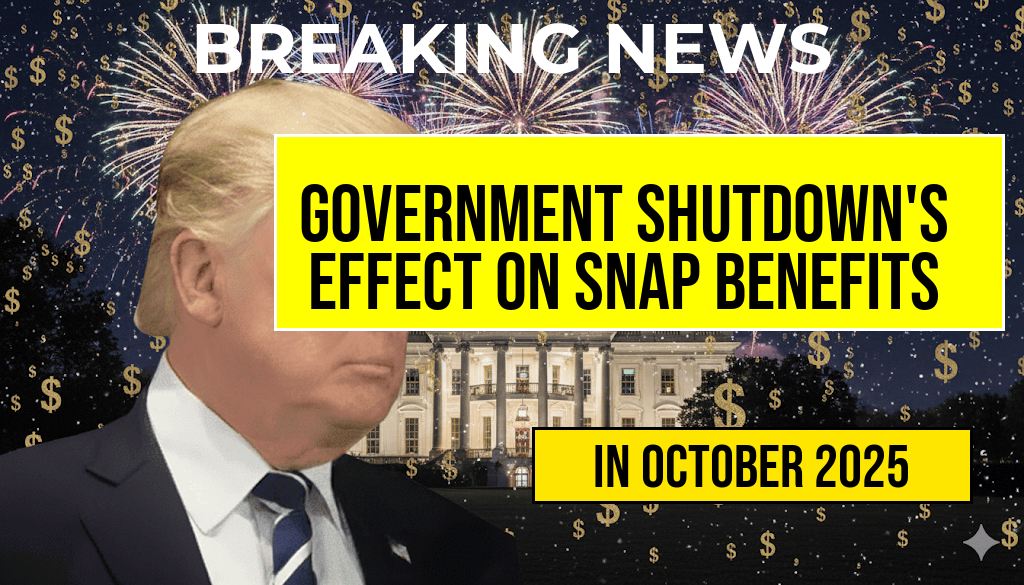The ongoing threat of a government shutdown has raised significant concerns for millions of Americans reliant on the Supplemental Nutrition Assistance Program (SNAP) and food stamp programs. As lawmakers grapple with budget disagreements, the implications for these vital assistance programs are becoming increasingly clear. With the government poised to halt operations, many recipients are left wondering how they will secure their next meal. SNAP, which serves approximately 42 million individuals and families each month, could face disruptions in funding and service delivery, impacting food access for vulnerable populations. This article explores the potential outcomes of a government shutdown on SNAP benefits, the broader implications for food security, and what recipients can expect in the coming weeks.
Understanding SNAP and Its Importance
The Supplemental Nutrition Assistance Program (SNAP) is a critical federal aid initiative designed to alleviate hunger and improve nutrition among low-income individuals and families. Funded through the U.S. Department of Agriculture (USDA), SNAP benefits are distributed in the form of Electronic Benefit Transfer (EBT) cards, allowing recipients to purchase food from authorized retailers.
Potential Impacts of a Government Shutdown
A government shutdown occurs when Congress fails to pass appropriations legislation to fund federal government operations. In such a scenario, the USDA may experience disruptions that could affect the distribution of SNAP benefits. Here are some specific ways a shutdown could impact the program:
- Delays in Benefit Disbursement: If the government is shut down, federal employees responsible for processing SNAP applications and distributing benefits may be furloughed, leading to delays in payments.
- Increased Enrollment Pressure: During previous shutdowns, there has been a noticeable uptick in applications for SNAP as individuals facing economic uncertainty seek assistance.
- Food Access Challenges: With benefits potentially delayed, food security could be jeopardized for millions, particularly among vulnerable populations, including children and the elderly.
Historical Context of Government Shutdowns and SNAP
Historically, government shutdowns have had varying impacts on SNAP. For instance, during the 2018-2019 shutdown, SNAP benefits were initially distributed for January, but uncertainty loomed for subsequent months. The USDA assured recipients that they would receive their benefits at least through that period, but the situation highlighted the fragility of food assistance programs in times of political strife.
Current Situation and Legislative Outlook
As of October 2023, lawmakers are once again at an impasse over budgetary issues, posing a significant threat to SNAP funding. The Biden administration has emphasized the importance of maintaining funding for food assistance programs, underscoring that a government shutdown would disproportionately harm low-income families already facing economic challenges.
Senate Majority Leader Chuck Schumer stated, “We must prioritize the needs of our most vulnerable populations, ensuring that hunger does not become an additional burden during these uncertain times.”
What Recipients Should Know
For those relying on SNAP benefits, here are some important points to consider during a potential government shutdown:
- Stay Informed: Regularly monitor updates from the USDA and local SNAP offices regarding the status of benefits.
- Plan Ahead: If you anticipate delays in benefit disbursement, consider stocking up on non-perishable food items when possible.
- Reach Out for Help: Community organizations and food banks can provide immediate assistance for those in need while facing uncertainty.
Conclusion
The potential for a government shutdown poses a serious threat to SNAP benefits and the food security of millions of Americans. With lawmakers working to resolve budget disagreements, the focus remains on ensuring that vulnerable populations do not suffer due to political gridlock. As the situation develops, affected individuals are encouraged to stay informed and seek assistance when necessary.
For more details on SNAP and resources available to recipients, visit USDA SNAP or consult local food assistance programs.
Frequently Asked Questions
What is the impact of a government shutdown on SNAP benefits?
A government shutdown can lead to delays in the distribution of SNAP benefits, affecting the timely delivery of food assistance to eligible individuals and families. During a shutdown, the Food and Nutrition Service may face operational challenges, potentially disrupting services.
Will food stamp programs continue during a government shutdown?
While food stamp programs may continue to operate for a limited time during a government shutdown, funding may run out quickly, especially if the shutdown is prolonged. States may need to make difficult decisions about how to manage their resources.
How can individuals prepare for potential disruptions in SNAP?
Individuals are encouraged to stock up on non-perishable food items and ensure they have enough resources to last through potential delays in SNAP benefits. It’s also advisable to stay informed about government updates regarding the shutdown.
Are there alternative resources available if SNAP benefits are delayed?
If SNAP benefits are delayed, individuals can seek assistance from local food banks, community organizations, and charities that provide food aid. Many communities have resources specifically designed to help those in need during such times.
What should I do if my food stamp application is pending during a shutdown?
If your food stamp application is pending during a government shutdown, it’s important to follow up with your local SNAP office for updates. However, processing times may be extended, and patience may be required as services resume.

Leave a Reply